- Books Name
- AMARENDRA PATTANAYAK Mathmatics Book
- Publication
- KRISHNA PUBLICATIONS
- Course
- CBSE Class 11
- Subject
- Mathmatics
Chapter 10
Straight Lines
The slope of line and angles between two lines:
A line is sometimes called a straight line or, more archaically, a right line (Casey 1893), to emphasize that it has no "wiggles" anywhere along its length. While lines are intrinsically one-dimensional objects, they may be embedded in higher dimensional spaces. Harary (1994) called an edge of a graph a "line."
A straight line is just a line with no curves. So, a line that extends to both sides till infinity and has no curves is called a straight line.
The two properties of straight lines in Euclidean geometry are that they have only one dimension, length, and they extend in two directions forever.
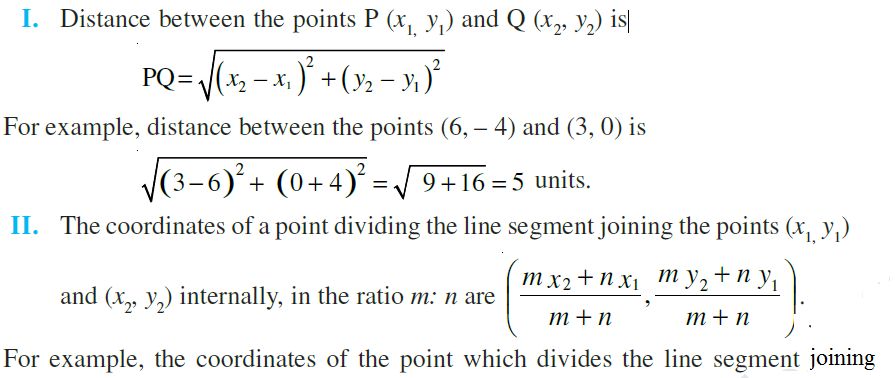
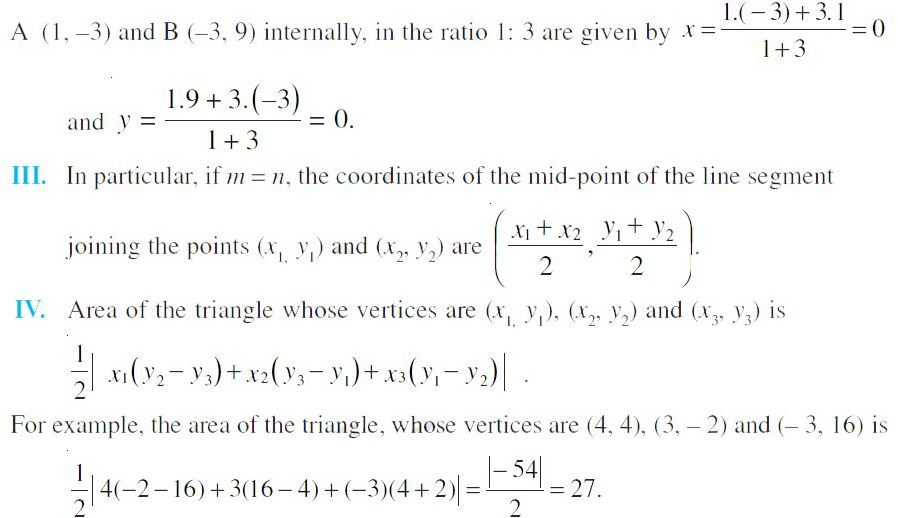
Note: If the area of the triangle ABC is zero, then three points A, B and C lie on
a line, i.e., they are collinear.
Slope of a Line:
A line in a coordinate plane forms two angles with the x-axis, which are supplementary.
The angle (say) q made by the line l with positive direction of x-axis and measured anti clockwise is called the inclination of the line. Obviously 0° £ q £ 180°
lines parallel to x-axis, or coinciding with x-axis, have inclination of 0°. The inclination of a vertical line (parallel to or coinciding with y-axis) is 90°.
Definition: If q is the inclination of a line l, then tan q is called the slope or gradient of
the line l. The slope of a line whose inclination is 90° is not defined.
The slope of a line is denoted by m.
Thus, m = tan q, q ¹ 90°
It may be observed that the slope of x-axis is zero and slope of y-axis is not defined.
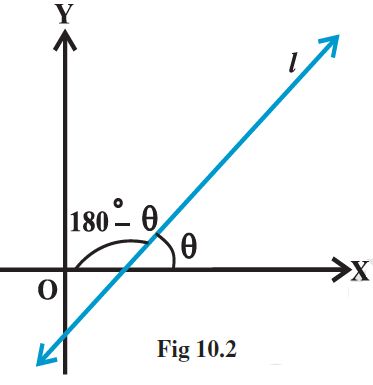
Slope of a line when coordinates of any two points on the line are given:
Let P(x1, y1) and Q(x2, y2) be two points on non-vertical line l whose inclination is q.
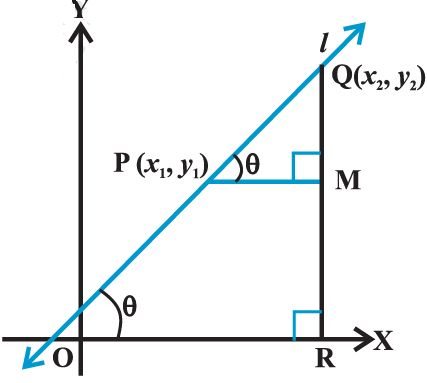
Case I When angle q is acute:
ÐMPQ = q. ... (1)
Therefore, slope of line l = m = tan q.


Case II When angle q is obtuse:
we have ÐMPQ = 180° – q.
Therefore, q = 180° – ÐMPQ.
Now, slope of the line l
m = tan q
= tan ( 180° – ÐMPQ) = – tan ÐMPQ

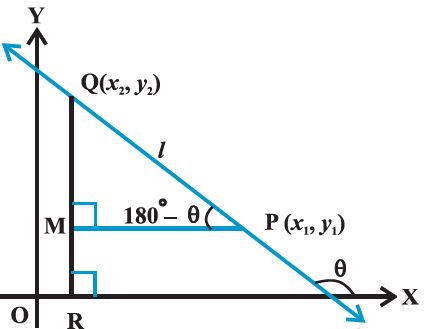
Example : Find the slope of the lines:
(a) Passing through the points (3, – 2) and (–1, 4),
(c) Passing through the points (3, – 2) and (3, 4),
(c) Making inclination of 30° with the positive direction of x-axis.
Solution: (a) The slope of the line through (3, – 2) and (– 1, 4) is
m = (4 – (-2)) /(-1 – 3) = 6 / - 4 = -3/2
(b) The slope of the line through the points (3, – 2) and (3, 4) is
m = (4- (- 2)) / (3-3) = 6 / 0 , which is not defined.
(c) Here inclination of the line a = 60°. Therefore, slope of the line is
m = tan 30° = 1 / √3

 KRISHNA PUBLICATIONS
KRISHNA PUBLICATIONS
